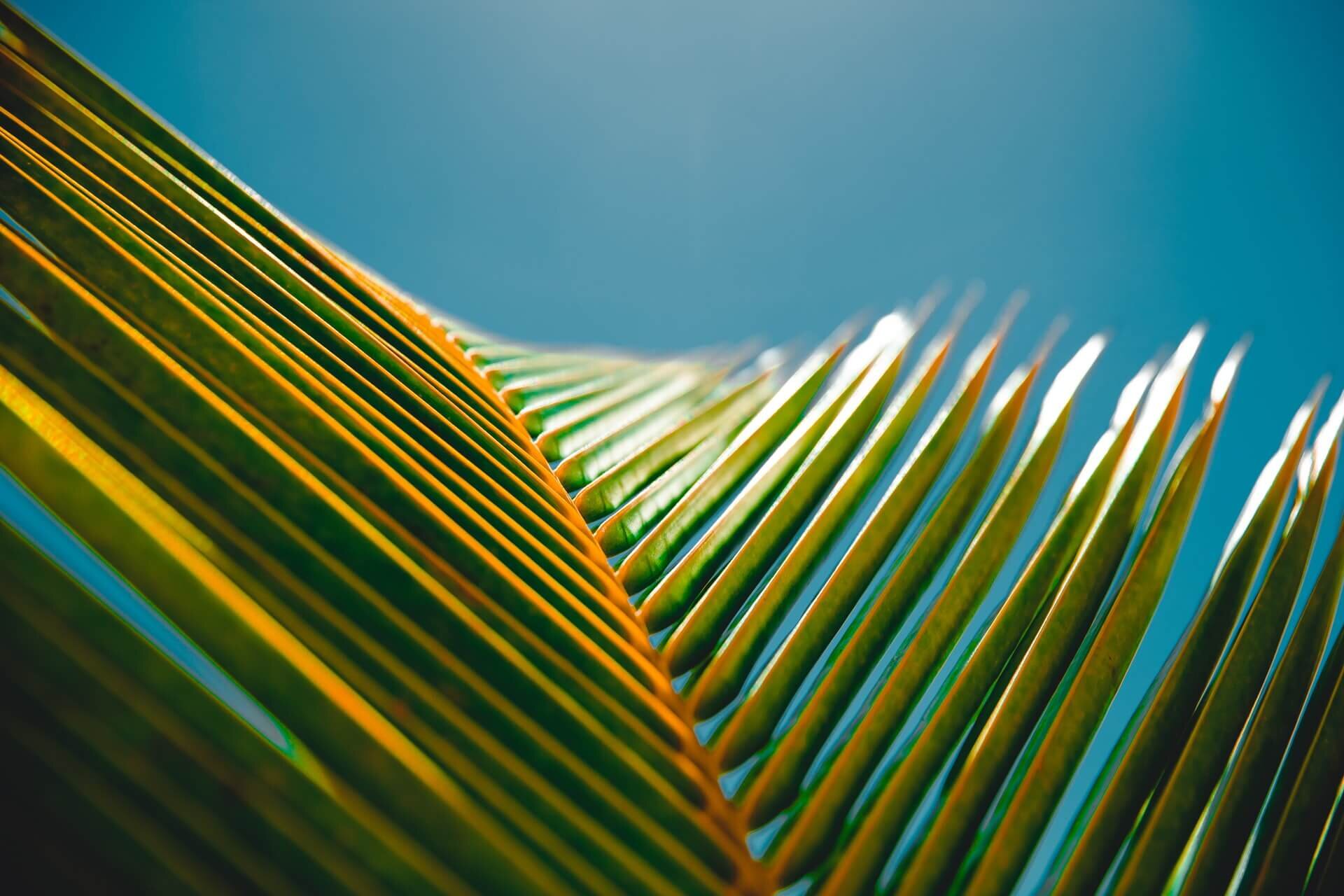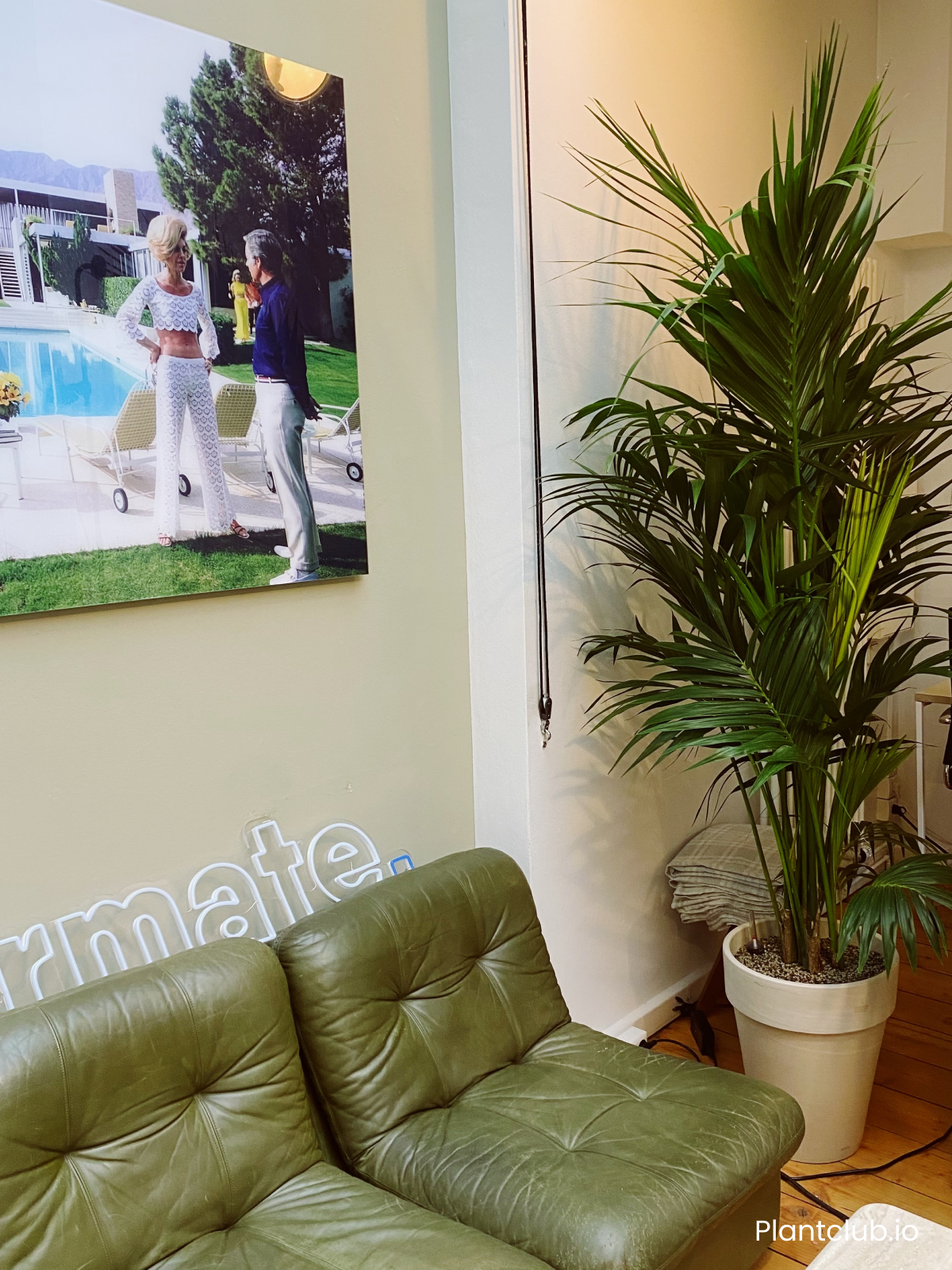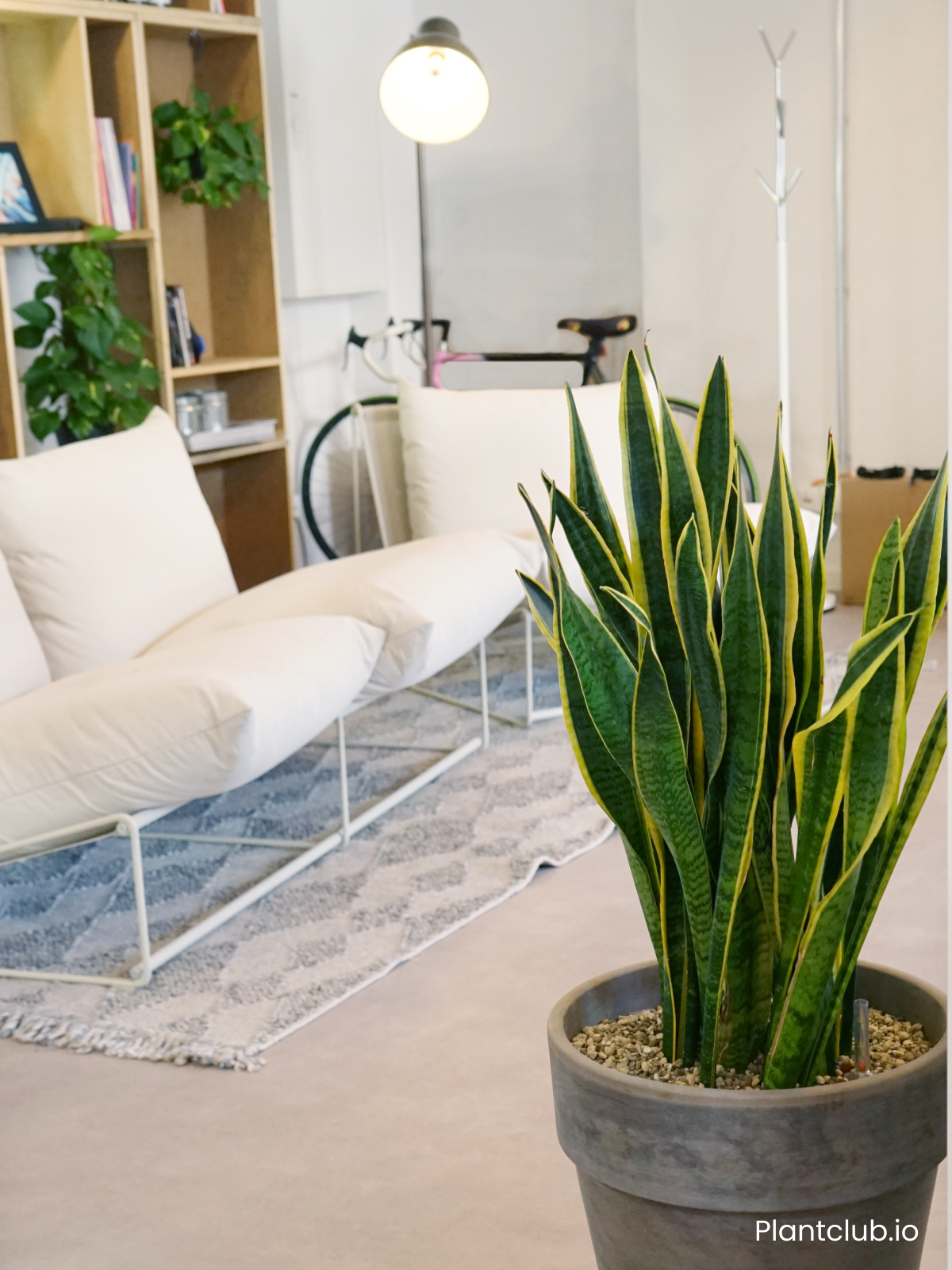Traveling the world through tropical office plants - part 2
Plants from tropical regions are grown as stunning indoor greenery around the world. From palms to rubber plants, some of the tallest trees can thrive inside as ornamental varieties.
Curious about where your favorite houseplants come from? Take a trip with us through the forests of southern Asia to the coastline of Lord Howe Island, and find out where five tropical office plants call home.
Rubber plant
Let’s start in the forests of India, Myanmar, and Malaysia—home to the rubber plant tree, or Ficus Elastica. Rubber plant leaves are large and glossy, making the ficus tree a top contender for the position of most popular houseplant. There are a number of ficus elastica varieties, like the dark green Ficus Elastica Abidjan, and the Ficus Elastica Tineke with leaves patterned in pinks and greens.
While the rubber plant grows to a maximum of 3 meters indoors, ficus elastica in the wild can reach ten times that height. In its natural habitat, the rubber tree produces buttressing roots that are so strong they’ve been trained across chasms into living bridges in India’s northeastern state of Meghalaya—but sadly this impressive feature can’t be replicated in the workplace.
These leafy plants make excellent statement pieces, and can be used as space dividers. Beyond looking incredible, rubber plant benefits include removing pollutants and improving air quality. They’re pretty easy to care for too, preferring indirect sunlight and moist soil—just like its tropical home.
Ficus elastica melany is available in the Plant Store.
Calathea orbifolia
You’ll find this tropical beauty in the rainforests of Bolivia in South America. With pale green leaves covered in silver stripes, the attention-grabbing foliage of calathea orbifolia plants make them an enviable addition to your workplace. They’re part of the prayer plant family, so the leaves fold and unfurl throughout the day, as if in prayer.
As with other calathea types, orbifolias are known to be fussy. They need indirect sunlight and high levels of humidity—regular misting will make them feel at home in your workplace. Orbifilias are sensitive to both over and under-watering (like we said, they’re not easy to please). If your calathea orbifolia has brown edges, try changing up its watering schedule.
The calathea family has many other gorgeous varieties, such as the dark green and pink calathea ornata, and the boldly striped calathea zebrina. These decorative plants are perfect for brightening up dull corners and adding a touch of style, wherever you work. If your workplace is shared with furry friends, non-toxic calatheas are one of the best types of indoor plants to have.
Calathea orbifolia is a great entry plant to tropical plants. Check it out in the Plant Store.
Chinese money plant
Next we’ll head to the Chinese provinces of Yunnan and Sichuan to discover the natural habitat of the pilea peperomioides, or Chinese money plant. The adorable saucer-shaped leaves and its air of exclusivity—until recently these plants weren’t widely available to buy—made the pilea instagram famous.
While Chinese money plants are basking in online stardom, pilea peperomioides in the wild are considered endangered. It’s rare to see their distinctive foliage growing in the shade of rocks, in the mountainous regions they used to call home. Luckily propagation of pilea peperomioides is very simple, and there’s a booming houseplant population.
These plants are a favorite amongst interior designers for their distinctive foliage, while an undemanding routine means even the most brown-thumbed of us can care for a pilea. We can’t promise that Chinese money plants will bring your business luck—but they make lovely tropical desk plants.
Chinese money plant aka pilea peperomioides.
Kentia palm
Imagine you’re on a remote island in the South Pacific: warm sun, turquoise ocean, and white-sand beaches lined with palm trees. That’s the natural habitat of the howea forsteriana, commonly known as a Kentia palm tree or thatch palm.
These palm trees are native to the paradise of Lord Howe Island. Their elegant, feather-like fronds won royal approval from Queen Victoria, who had a kentia palm plant in each of her (many) homes. While you won’t end up with a full-blown tree, when grown inside the kentia can still reach a respectable 3 meters tall.
Kentia palm plant care is relatively easy—they’re tolerant of low light and won't mind if you miss a watering or two. An indoor kentia palm is a great choice to highlight certain features of the office, such as entryways or reception areas.
At Plantclub we often place Kentia palm in our member’s offices. Get your own indoor Kentia in the Plant Store.
Snake plant
Let’s end our tour in the tropics of western Africa, home to the sansevieria trifasciata. The pointed leaves covered in striking patterns have earned this stylish houseplant a couple of unflattering common names: mother in law’s tongue and snake plant.
Native to dry regions, sansevieria make great low-maintenance tropical plants for the office. Snake plant care is more about leaving it alone than constant attention, so they won’t mind being neglected a little.
One of the greatest benefits of snake plant cultivation is its air purifying qualities—absorbing carbon dioxide and other pollutants, while releasing high levels of oxygen. There are plenty of snake plant types, with varied coloring and leaf shapes to choose from. These tropical office plants will add an eye-catching feature to any workplace.
A sansevieria laurentii in a Plantclub-member workspace. Sansevieria laurentii are available on the Plant Store.
Plantclub.io provides you and your colleagues with the benefits of plants, wherever you work. Rent office plants and transform your space into a green oasis, with flexible monthly membership options to suit your size. Diversify your employee perks with a dedicated company store, where you can give green gifts and your team can buy plants for their home office. Book a time to chat with us today.






